Philips Hue outdoor lights Review
Philips Hue outdoor lights Review
Change the look of your garden
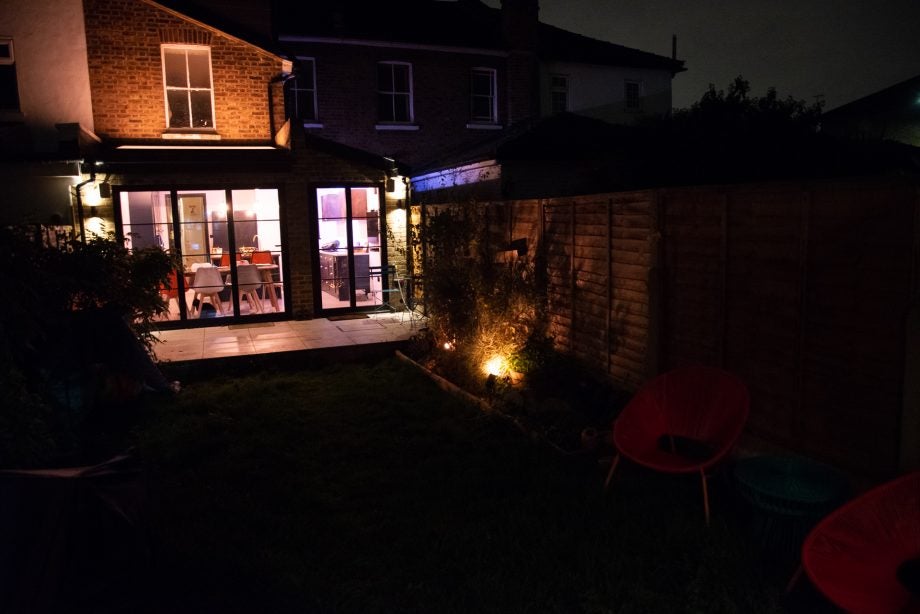
Verdict
A combination of the artistic and the practical, Philips Hue outdoor lights can transform your garden. There's a huge variety in the range, giving you lots of options to choose from to match your garden. Just make sure you get the right kind of PSU to give enough power.
Pros
- Easy to install
- Brings outside spaces to life
- Excellent app and voice-assistant control
Cons
- Relatively expensive
- Needs an outdoor power socket
Key Specifications
- Review Price: £230
- IFTTT, HomeKit, Amazon Echo and Google Home support
- Wall- and spike-mounting options
- Colour-changing lights
- Android and iOS apps
Not content with dominating the colour light scene inside your home, Philips Hue outdoor lights move the system into your garden. It comprises of a range of products, including the Outdoor Spot Lily, Outdoor Lightstrips, Tuar and Turaco wall lights and pedestals, plus the newer Amarant wall lamp.
Simple configuration and integration into an existing Hue setup enables you to blend indoor and outdoor lighting, but none of the systems is particularly cheap.
Philips Hue Outdoor design and installation – Requires some planning, and the right power supplies
- Outdoor power supplies can power multiple lights
- You need to match your lights to the PSU wattage
- Wide range of lights available
Every Hue outdoor light uses the same kind of waterproof connector that attaches to the outdoor power supply. Some products ship with the power supply, while others ship without. All products ship with T-shaped adapters that let your run multiple lights from the same supply.
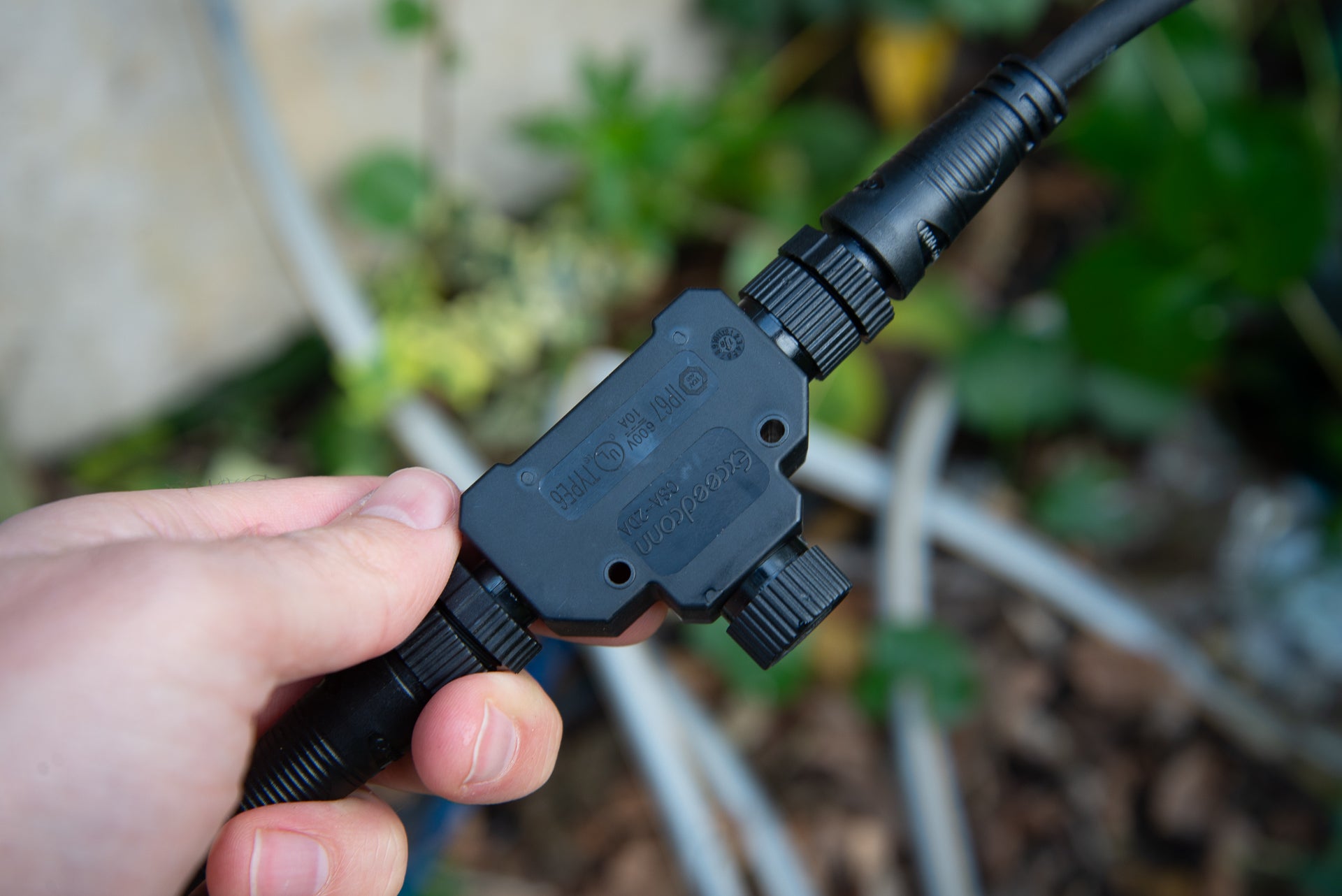
There are two outdoor power supplies: a 40W unit and a larger 100W model. When you buy lights, you can’t exceed the wattage of the power supply, or your lights won’t work. Even then, a bit of headroom is recommended. Running a 2m light strip (19W) with a Hue Amarant, my lights flashed on full brightness as they were drawing too much power.
Both power supplies can and should be screwed to a wall or fence to keep them off the floor. They have standard UK plugs that you can push into an outdoor weatherproof socket.
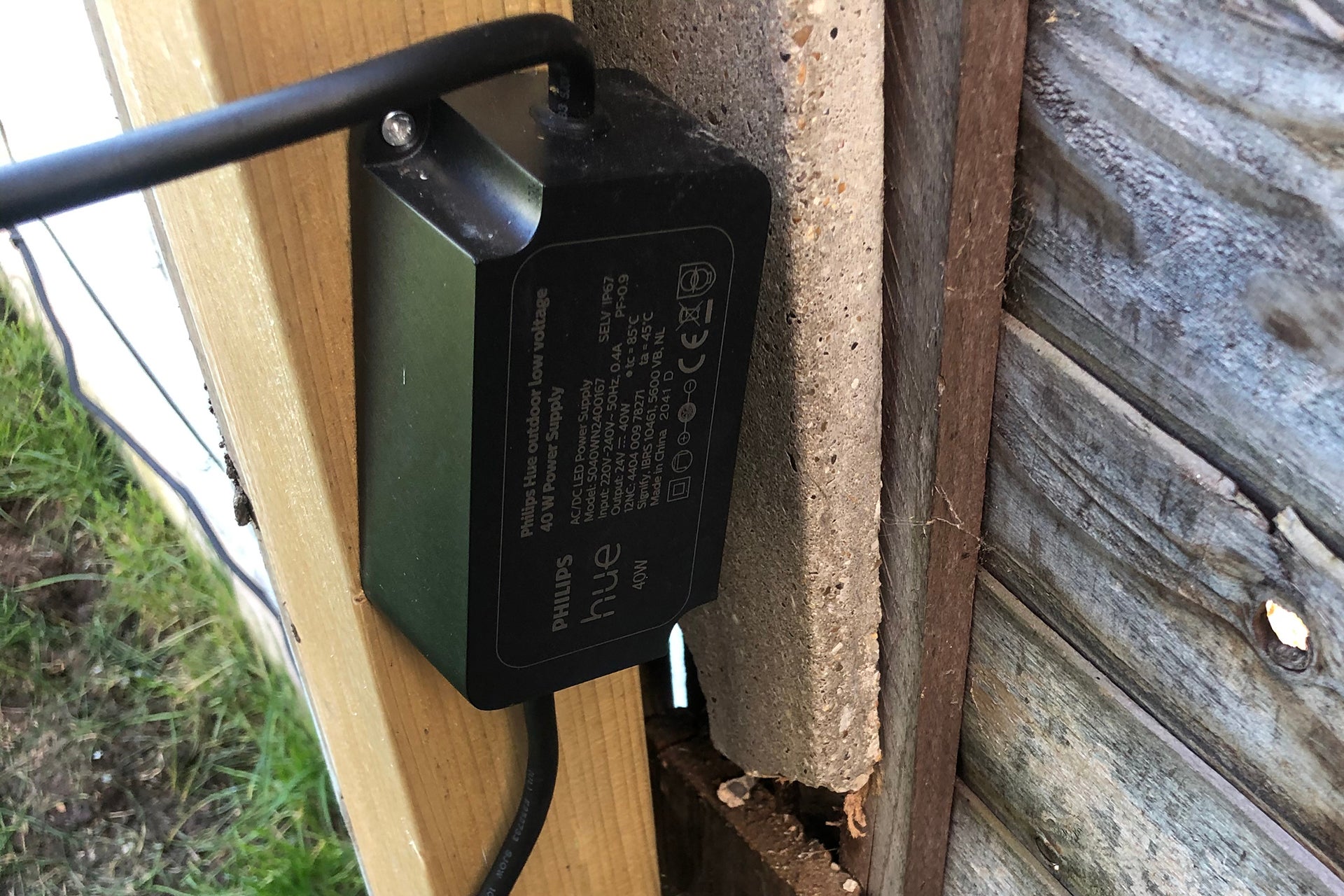
Installation is different, depending on the lights you buy. The models I’ve tested, and information on how they’re installed, are covered below.
Lily
The Lily can be bought as a three-pack, with additional extension lights available if you want to expand your system to five lights. The outer casing of each light is finished in matte black, which makes them unobtrusive, and the lights can be both wall-mounted or set in the ground via a garden spike. They can be angled vertically up into the sky, or down to the ground, offering great flexibility.
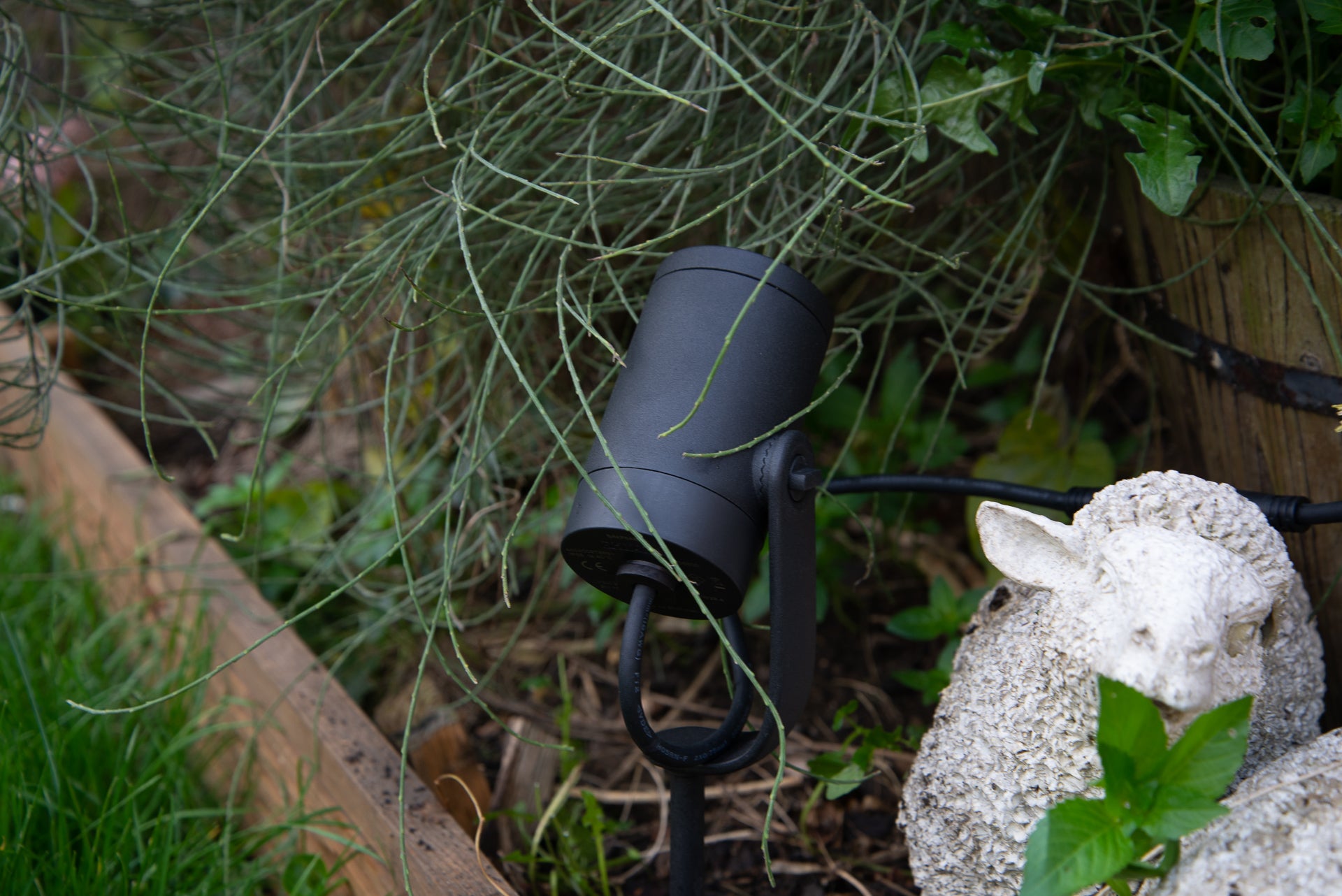
Inside the box you get the IP65-rated power adapter. This needs to be plugged into IP65-rated outdoor power sockets and screwed to wall or fence above the ground. You get 3 metres of cabling to the power adapter.
From this, you can run the three lengths of 5-metre extension cable, which hooks up to the T-junction boxes into which the lights plug in. Running the lights in a line provides 28 metres of coverage, which should suit most homes.
Lightstrip Outdoor
The Lightstrip Outdoor is available in 2-metre or 5-metre lengths, and is similar in operation to the indoor ones. The main differences are that, for waterproofing, you can’t cut the strips to length and you can’t extend them by joining multiple strips together. Philips has also engineered them to be more durable, wrapping the lights in a rectangular cover. The end result is similar to the Philips Hue Gradient light strip, which is designed to attach to the back of your TV.
You get a series of clips that can be screwed into a fence or wall, and then the light strip slides into these. You can put a bend in the strip, too, moving it around objects or even going from horizontal to vertical.
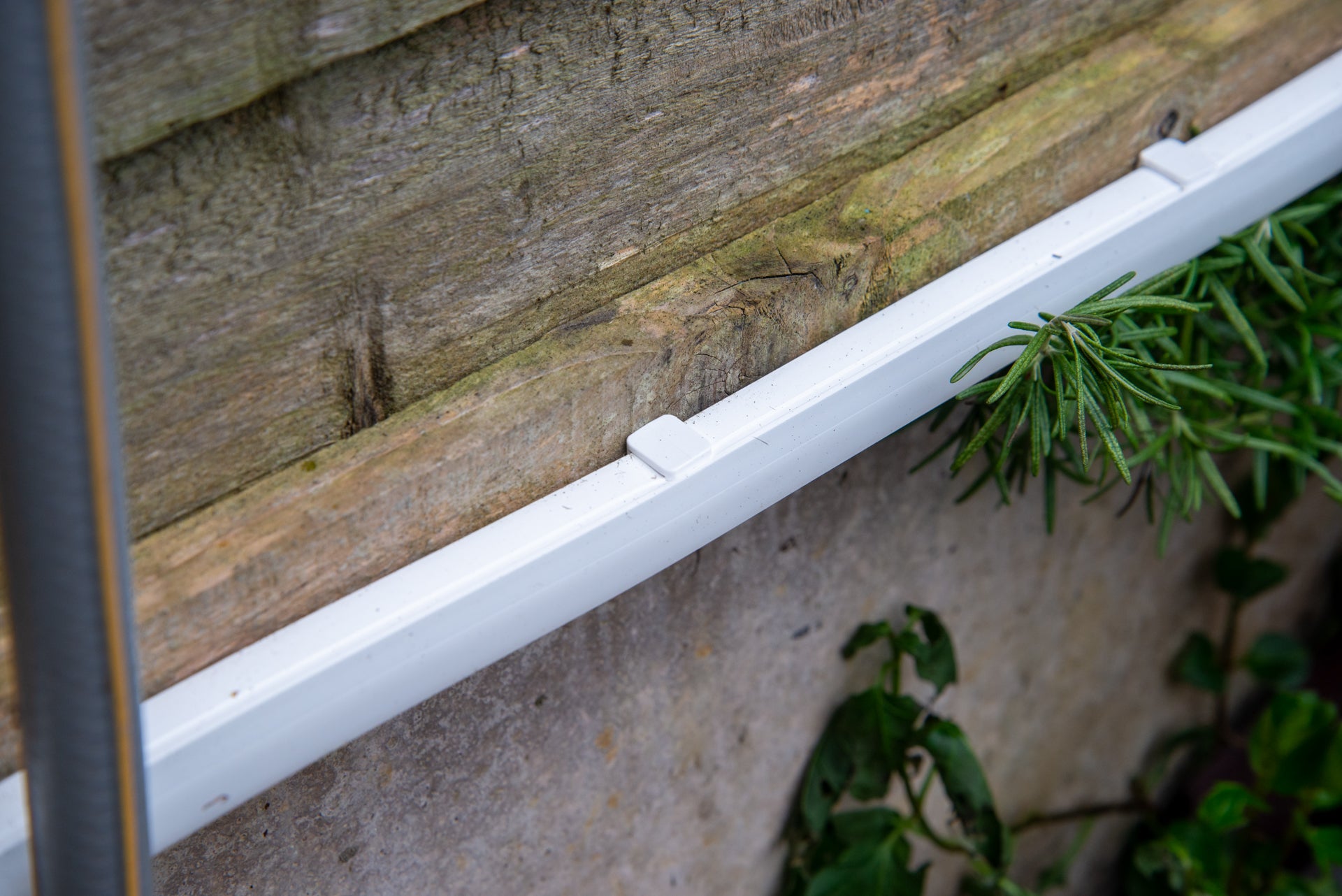
Inside the box you get a power adapter for the light strip, which connects to the main outdoor PSU. This, too, can be screwed to a fence or a wall to keep it out of the way.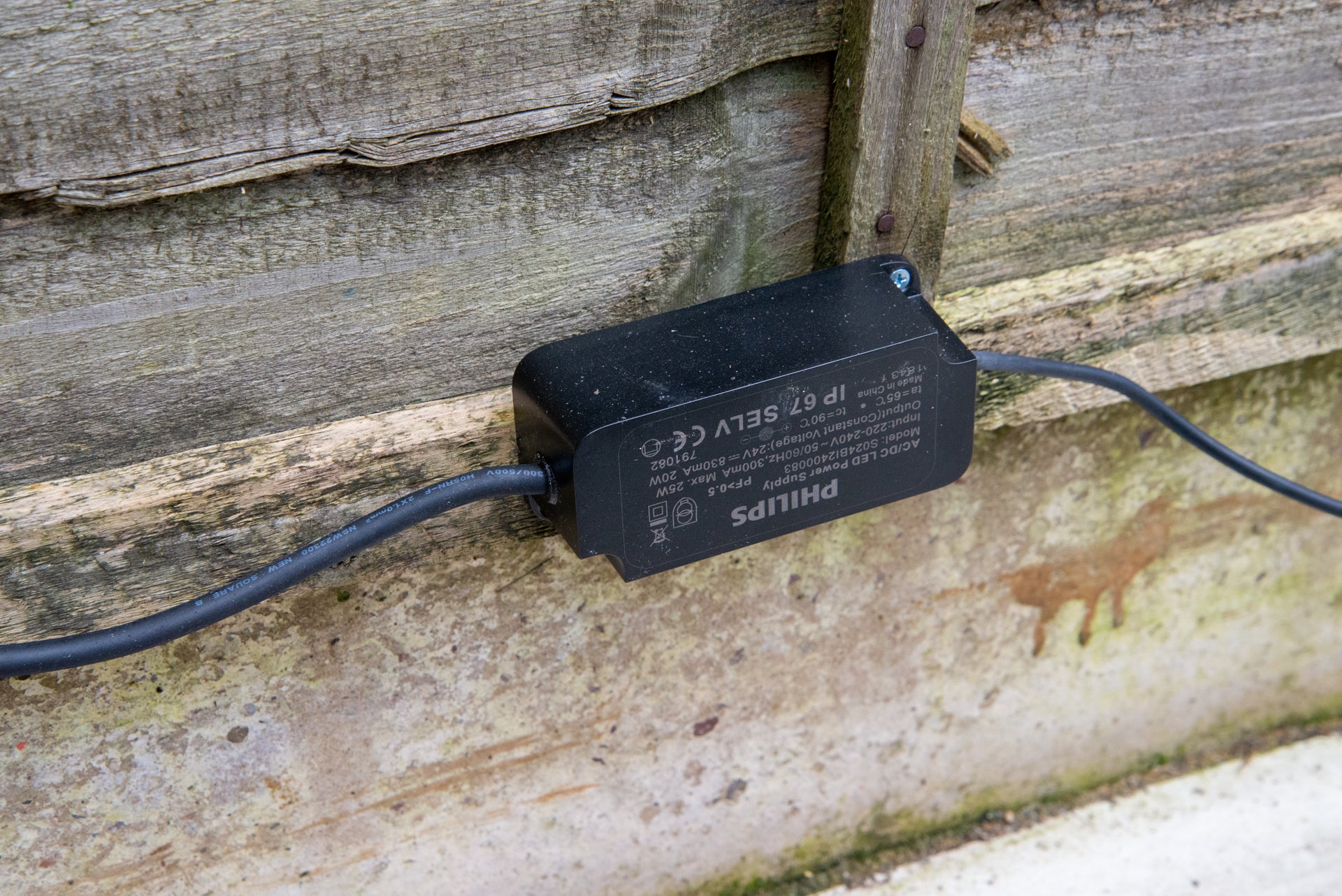
Amarant
The new Amarant light is designed as an uplighter, painting a wall or feature in colour. I decided to install mine against the outside bar, made out of old pallets. It’s heavy enough that you can place it down, but you can screw it in place or stake it into the ground for additional security.
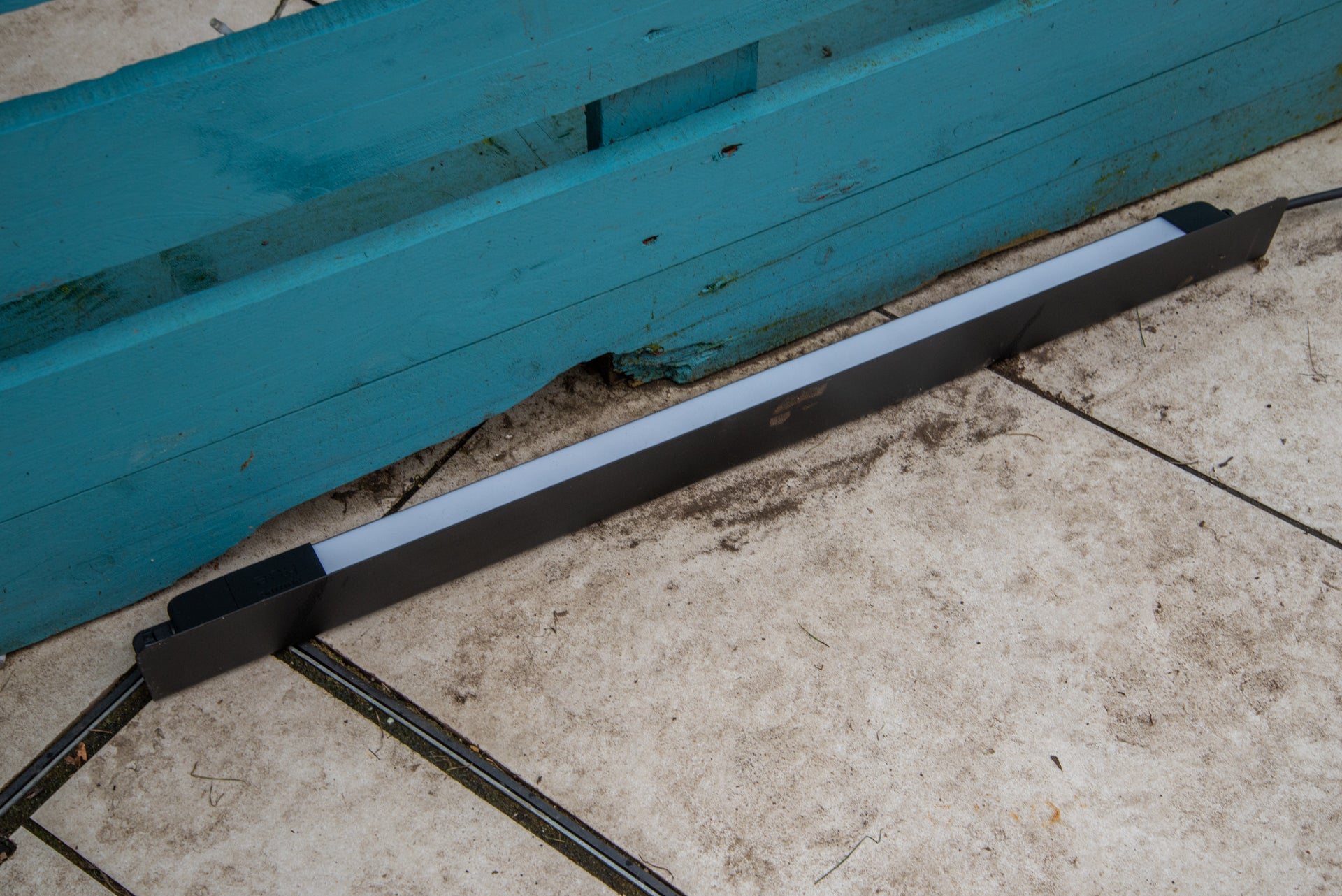
Philips Hue Outdoor features – Seamlessly blends into your existing Hue system
- Outdoor lights can be placed in a room and controlled together
- Works with the same range of accessories as the indoor lights
- There’s a special outdoor motion sensor available
All outdoor lights require a Hue Bridge to work. Once the lights are plugged in and turned on, they’re discovered as normal using the Hue app. It should take just a few minutes to join the Hue Bridge.
Thereafter, the lights became part of my current Hue system. I could add them into the garden room, which initiated control via the Hue Dimmer Switch I have set up by the backdoor in the kitchen. This also controls the Hue GU10 bulbs that I’ve fitted outside into weatherproof up/down-lighters.
This is impressive, as a single wireless dimmer then provides complete control over the garden, with it operating in exactly the same way as indoor lights, complete with colour and scene options. My complete Philips Hue review goes into more detail about how the system works in general.
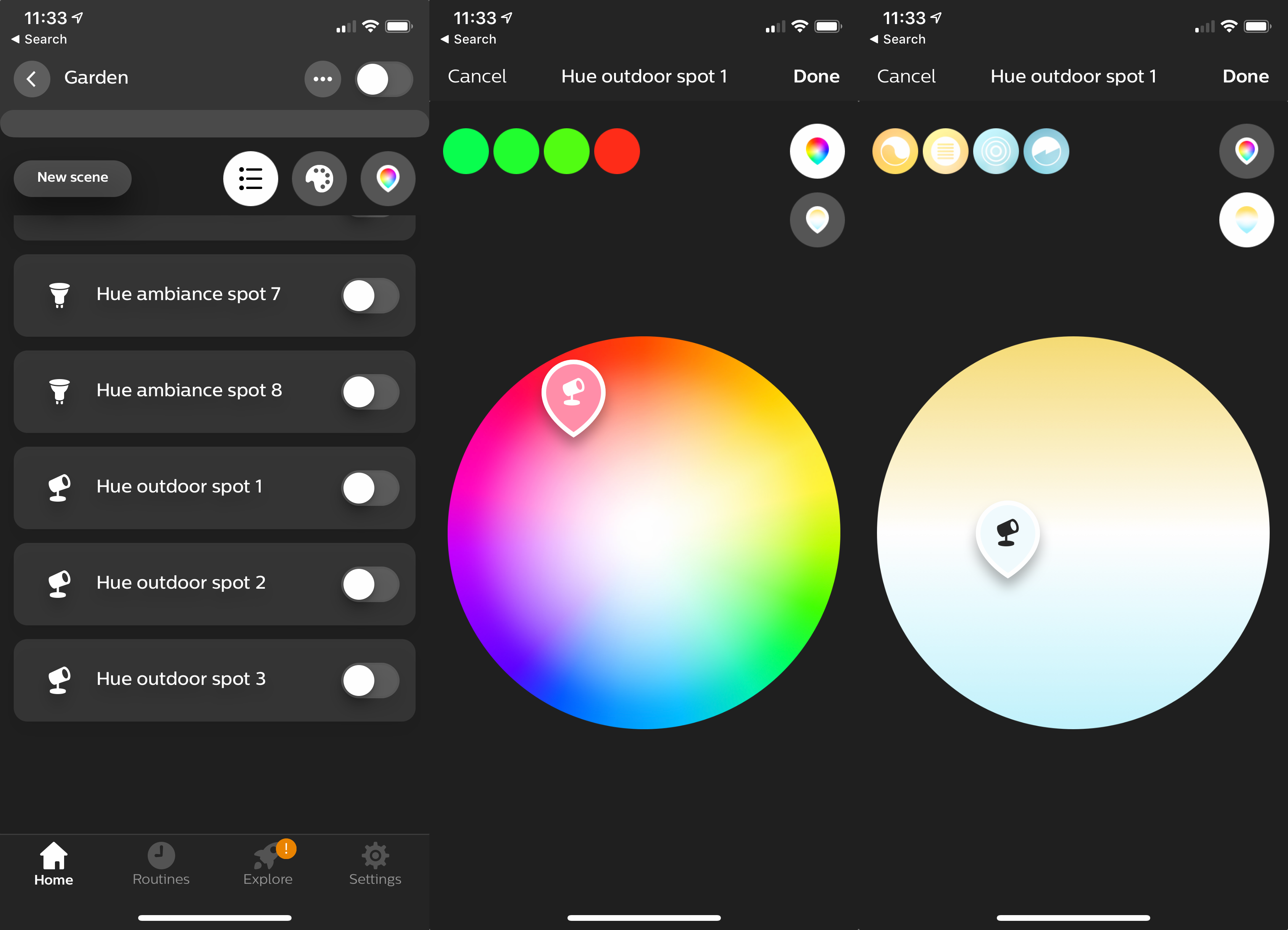
While the outdoor lights are compatible with all of the indoor controls, Philips also has the Hue Outdoor Motion sensor. This model is basically a weatherproof version of the indoor sensor, which uses a PIR sensor to turn on lights when motion is detected. You can screw the motion sensor to a fence or wall, and there’s an angled bracket provided if you need to put the sensor in a corner.
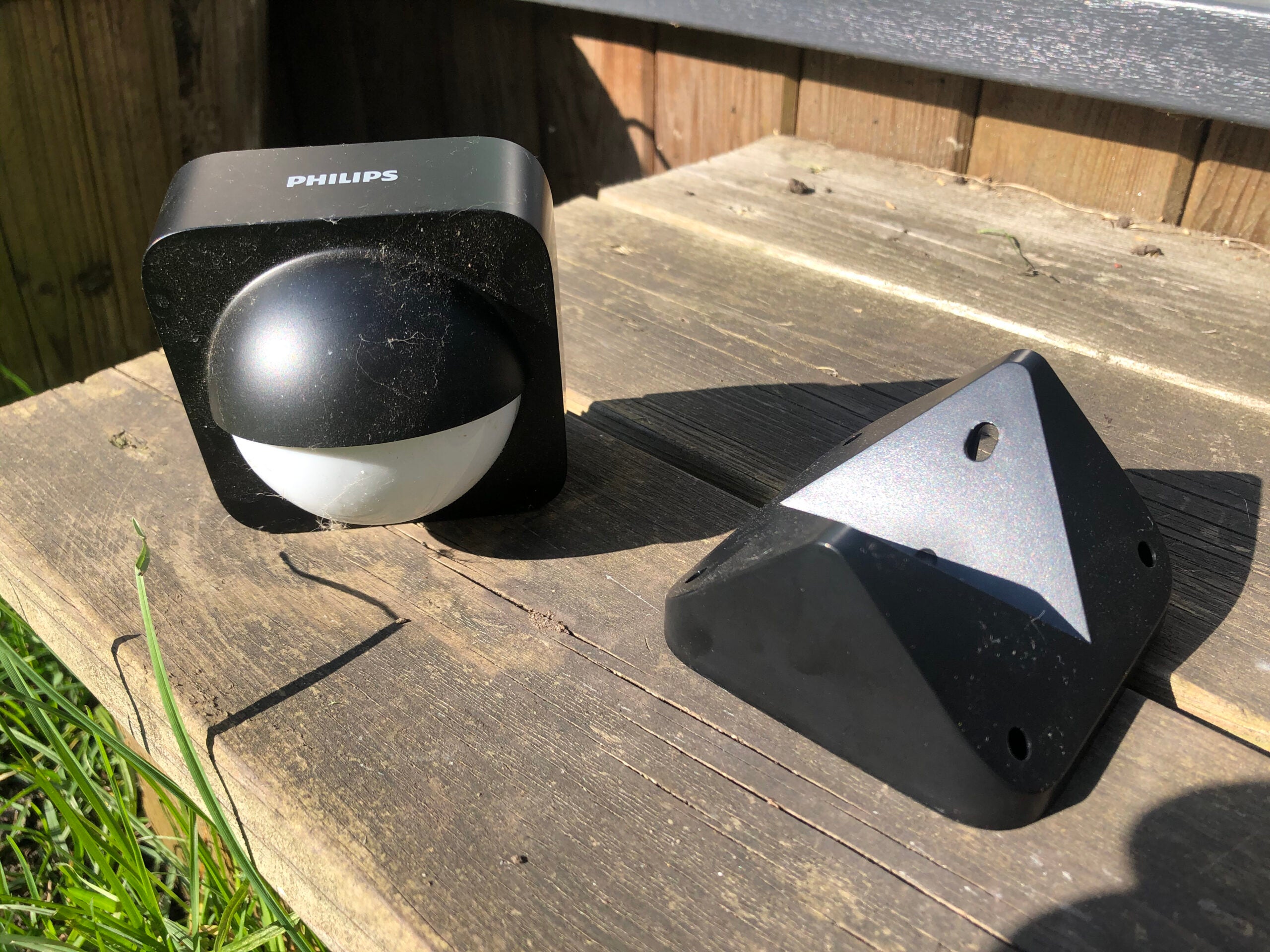
In the app, the Outdoor Motion Sensor works in a similar way to the internal one. You can choose which room or zone it operates, selecting the motion sensitivity that works best for you. There’s also a light sensor on it that triggers when the sensor is active, so you don’t have lights turning on when it’s bright outside.
In the app, you get to control the scene or colour and brightness of the light for two different times: Day and Night. You can manually set the times for when each is active. Why bother? Well, you can have your lights come on nice and bright up until 11pm, for example, and then just dimmed after that, so as not to bother your neighbours.
You can’t set your lights to turn on at the last setting, though. If you then want to pick a different scene or change the colour of your lights, you have to do that manually. For Day and Night you can also set the time-out period, and have the motion sensor turn off your lights after a set period, or you can have it do nothing.
I found that the Outdoor Motion Sensor worked best when you needed ad hoc light, such as lighting up a path to show you where to go. For mood lighting, it’s easier to have a switch that lets you cycle through the scenes available.
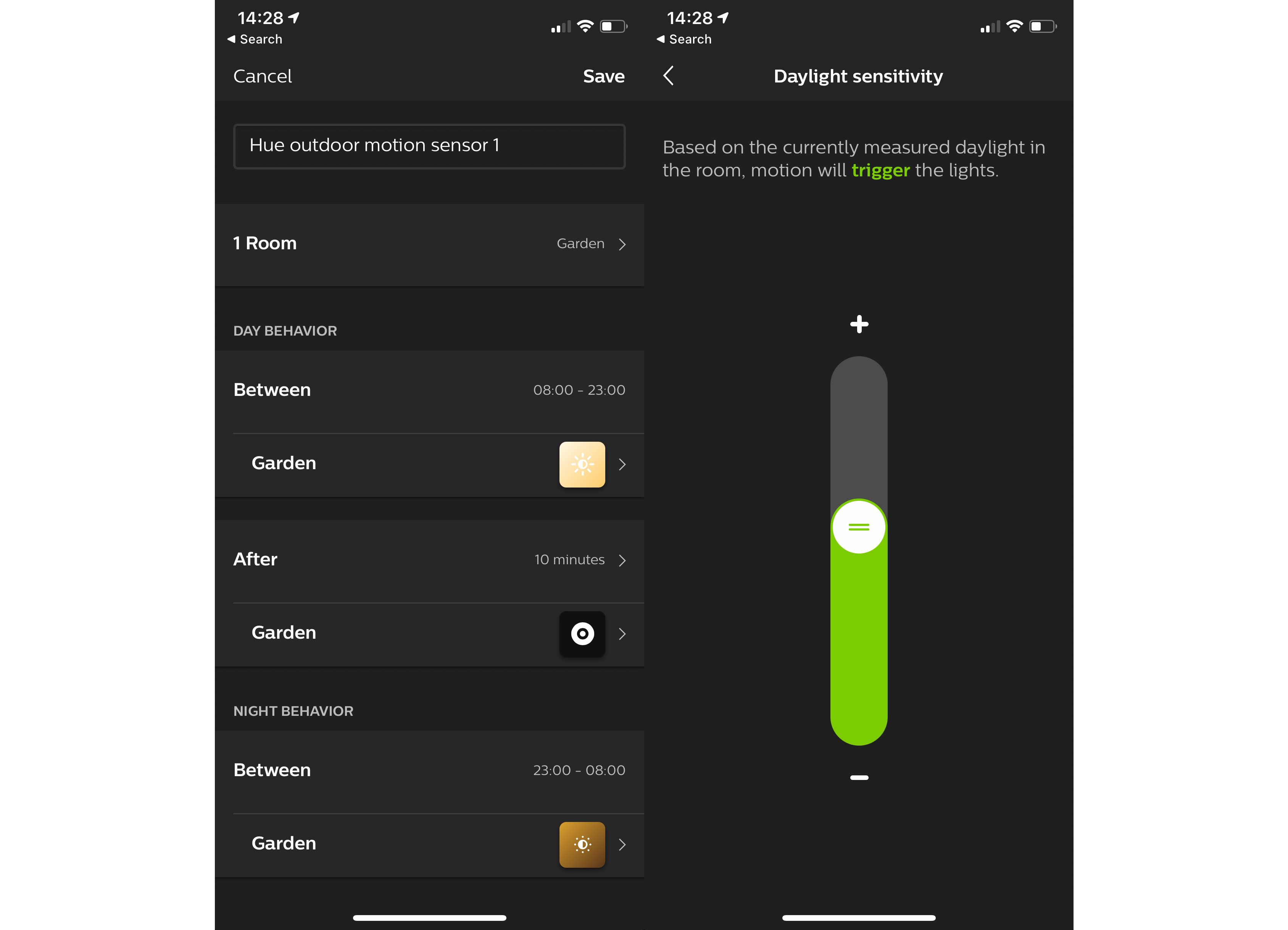
It should come as no surprise that the outdoor lights support the same range of features as the indoor units. There’s support for every voice assistant, including Amazon Alexa, Google Assistant and Apple Siri. All provide roughly the same level of control, letting you set brightness and colour with your voice, or invoking a scene.
With Apple Home support, you can control the lights from Apple’s app on your smartphone, or make the lights part of an integration, such as turning on your garden lights when a compatible camera detects motion. A similar trick can be achieved with IFTTT or SmartThings, too.
Philips Hue Outdoor performance – Bright, colourful and flexible
- Huge range of lights provides lots of lighting options
- Bright lights when using white options
- Colour options are still bright, but accurate and change the look and feel of your garden
Philips rates the Lily lights as equivalent to a 49W traditional bulb. That’s enough light to see by, producing a gentle and pleasing glow, rather than full-on floodlights. The Lily lights are definitely more about mood lighting.
The effect of the bulbs is excellent. A dull and dark garden, previously only lit by GU10 up/down-lighters at either end, came to life with the Lily lights. Being able to pick from a huge variety of colours and scenes let me change the look and feel of the garden with ease.
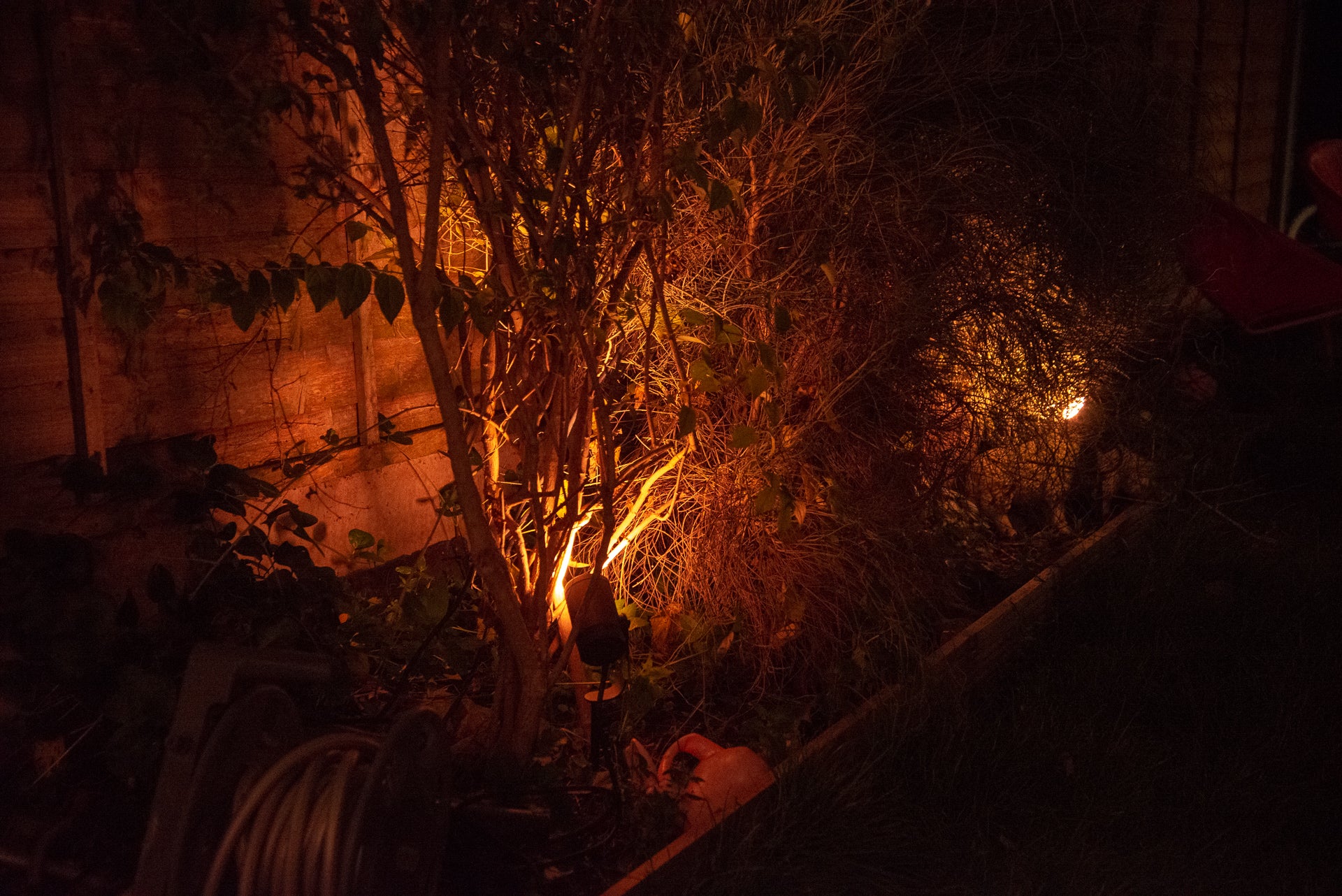
The Amarant is an excellent light, too. It provides up to 104W-equivalent of light, making it as bright as a regular high-power light bulb. It needs this power, since it has to evenly light up a surface.
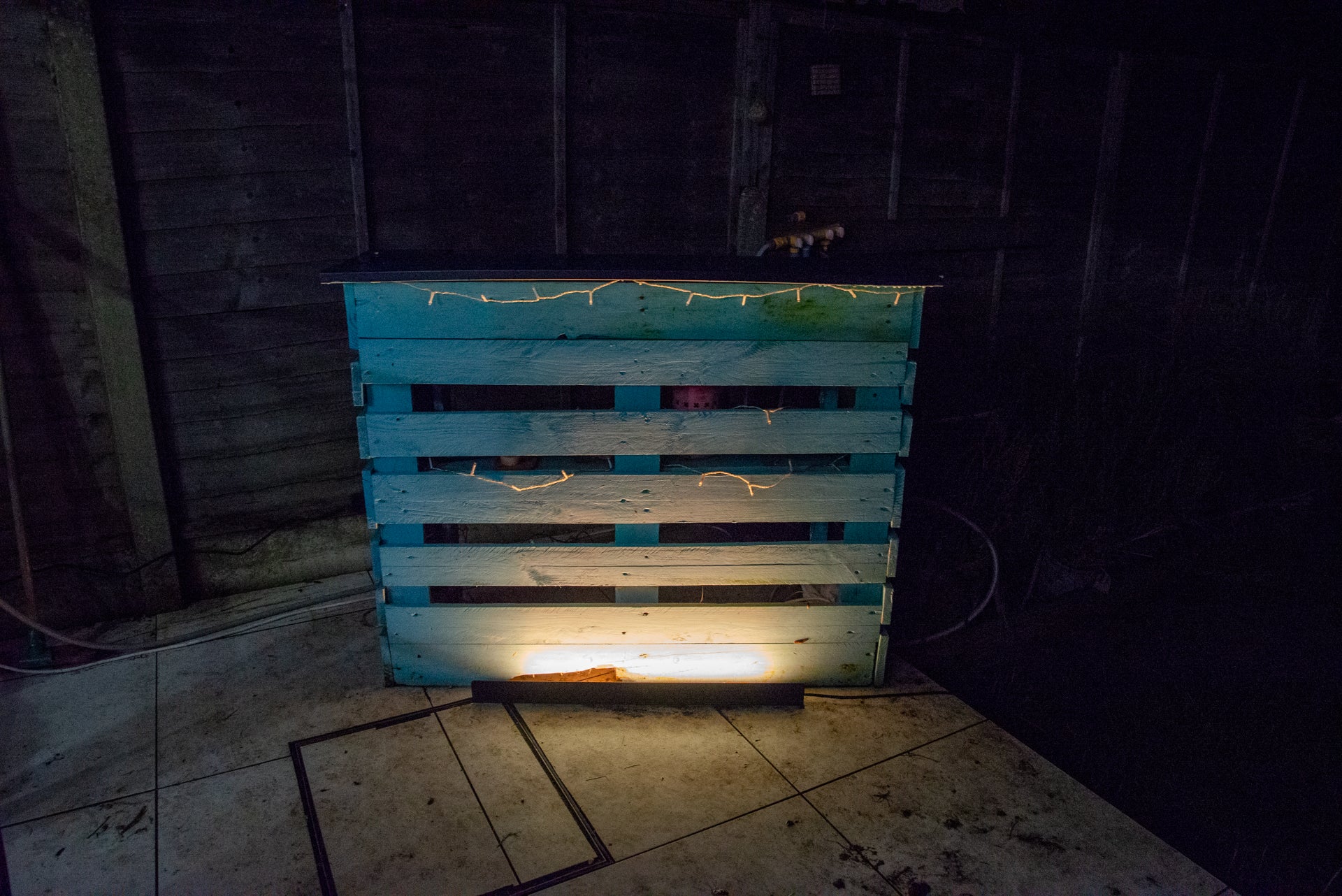
Whites are brighter than colours – but, as always with Hue, colour reproduction is excellent and still provides enough light to see by.

The LED light strip is excellent. Having this kind of flexibility to snake around objects and up fences lets you get light where you need it. It’s more than bright enough to see by when you use whites, and excellent colour reproduction with bright colours let you change the mood of your garden.
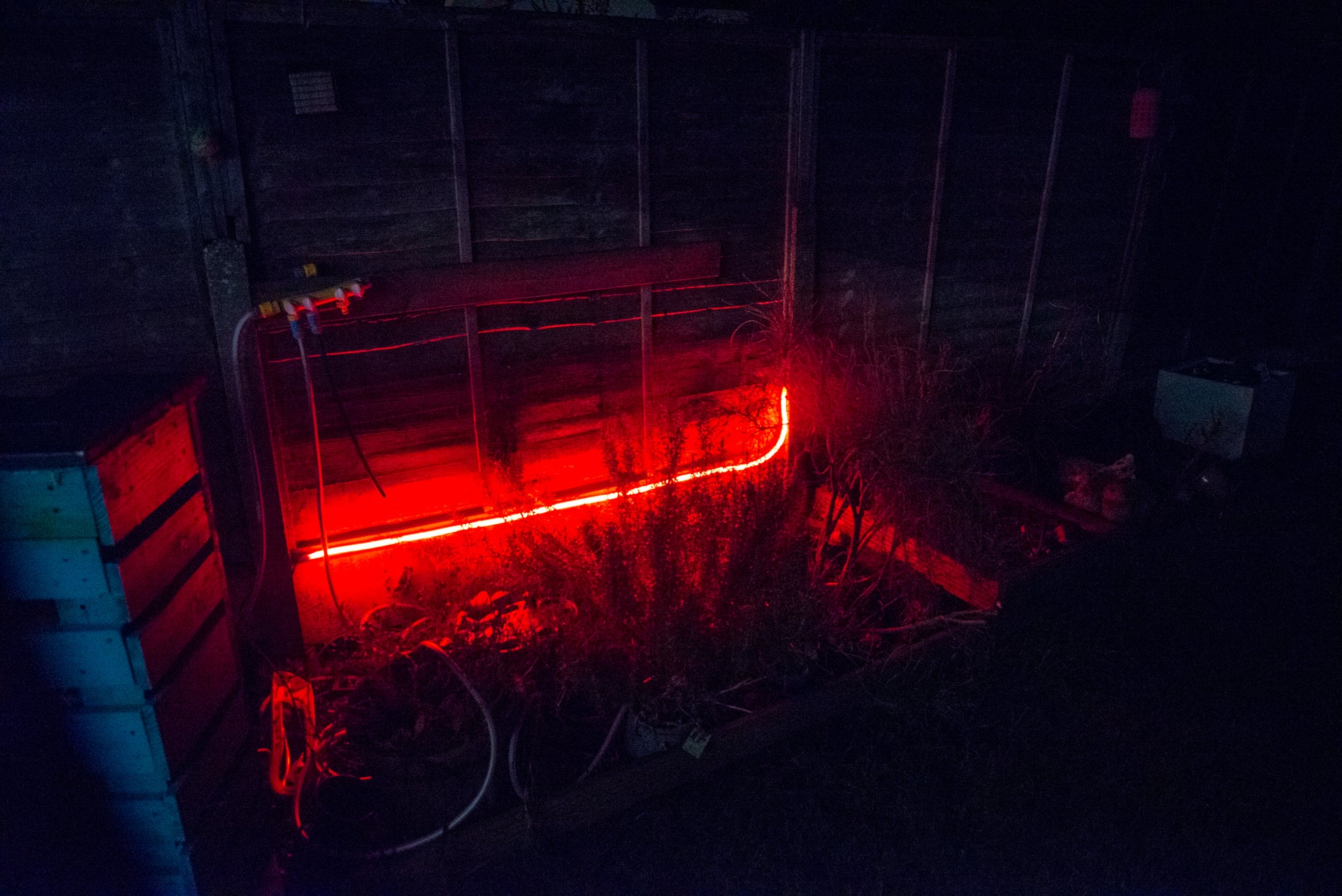
Should you buy the Philips Hue Outdoor?
Moving into the garden extends the Philips Hue’s capabilities. While it’s possible to install the current range of indoor lights into weatherproof housing, the Hue outdoor lights (see how to build a smart home extension), such as the Outdoor Spot Lily, offer more flexible placement. The range on offer means that no one specific light will suit everyone, but the choice available means that you’ll be able to find the right types of lights for you.
It’s important to get the power supply right, though; otherwise, you may have trouble with lights flashing. Fortunately, the new 100W PSU makes the lighting system more flexible. Products are expensive, but with a lifetime of up to 25,000 hours, they’ll last for more than eight years if used eight hours a day.


